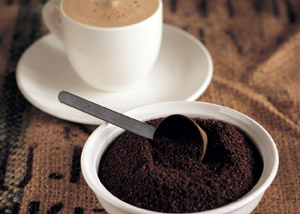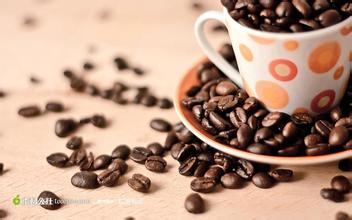Introduction to the production method of extra-concentrated espresso
Introduction to the production method of extra-concentrated espresso
How to make espresso (espresso)
To achieve a cup of espresso (espresso), the most important factor is stable pressure and stable temperature.
Sometimes those who encounter half a bottle of water will say that this term is out of date, and now the best semi-automatic coffee machine is variable pressure.
Indeed, since 2004, the real variable pressure coffee machine has been born, gradually spread all over the world, and began to enter China in recent years.
But the pressure swing coffee machine is not random, its pressure control requirements are far greater than the traditional semi-automatic Italian coffee machine, coupled with the price of more than a hundred thousand is not affordable to the average family.
To quote the explanation of Brother Bird, the Great Coffee God, "how to understand the variable pressure technology: to reach the specified pressure value at any time, and to be stable, and to remain unchanged after changing to the specified pressure value again, is the real variable pressure."
Since we can't afford the Tuhao coffee machine, we should return to the traditional espresso machine and return to espresso's golden rule of "extracting 1 ounce (30ml) of espresso (espresso) in 25-30 seconds at 90-92 degrees Celsius under 9bar pressure."
Although this golden rule is still controversial in professional coffee forums in recent years, 9bar pressure is basically not controversial, so a bunch of coffee machines boasting 15bar or higher actually refers to the most high pressure of the coffee machine, which is of little significance, and is generally used to fool newcomers. Stable pressure and stable temperature are the criteria for measuring Italian coffee machines.
Now that you know the two most important factors of espresso (espresso), you can choose the espresso machine, all traditional espresso machines are designed around these two factors.
In the Italian coffee machine, the influence pressure value is mainly the pump, the pump is divided into the vibration pump and the rotary pump, the pressure curve of the vibration pump fluctuates, and the pressure curve of the rotary pump tends to be a straight line, but the machine of the rotary pump is not less than 8000 at present.
Now "Espresso" has almost become a representative symbol of Italy, so it seems more natural for Italy to define "Espresso".
So what is "Espresso"? Comprehensive coffee beans roasted at a depth of 7-8 grams are ground into very fine coffee powder. after 9 atmospheric pressure and high temperature hot water of about 92 degrees Celsius, 30 milliliters of strong coffee liquid is rapidly extracted in a short time of 15 seconds called "Espresso". The most important thing about a successful "Espresso" is to see if there is a thick layer of brown-red grease foam floating on the surface: "Crema Cleima".
The most important feature of "Espresso" is the cohesion of fragrance and taste. The general orthodox way to drink is to drink it in one sip while waiting for the coffee to come out. While enjoying the fragrant taste, caffeine intake is greatly reduced. This drinking method, which takes the taste of coffee to the extreme but takes care of health, has made coffee experts around the world recognize that "Espresso" is worthy of the soul of coffee.
Espresso is Italian, meaning "under pressure", which reflects the importance of stress in the production of espresso. In the eyes of those who play with coffee, Espresso is no longer a simple "espresso". It is a kind of comprehensive coffee, a method of roasting, a kind of coffee brewing, a kind of cooking, and also a kind of raw coffee.
Use the same amount of beans as a single espresso, which is 1 stroke 2 of an espresso. It can be said that it completely crushed the delicious essence of coffee beans. (Ristretto) in Italian, it means concentrated, short.
Materials: 1 cup (15-20ml) Espresso coffee beans 6.5mur10g coffee beans (6.5mur10g), extraction time (20mur30s, water temperature 90 degrees Celsius) are the same as a single espresso, the extraction amount will vary slightly from barista to barista, but roughly half the amount of So'o, that is, 15-20ml My method is to use 8.5ml 9g beans, the extraction time is 27ml 28s, the extraction amount is about 17ml, and the grinding thickness of beans is finer than that of Solo.

Important Notice :
前街咖啡 FrontStreet Coffee has moved to new addredd:
FrontStreet Coffee Address: 315,Donghua East Road,GuangZhou
Tel:020 38364473
- Prev

Dench Dream Coffee Bean Flavor Introduction-Latte Practice
Dench dream coffee bean flavor introduction-latte practice 1, I am also served, when I get it, it is also like this. Is it a quality library packaging problem, or a quality library delivery transportation problem. 2. The quality of the complimentary cups is not very good. There are also bulging cups. I don't like them very much. The black ones are different from the cups shown above.
- Next

Introduction to the perfect standard of espresso dried beans for extraction
What is the perfect espresso dried bean standard? introduction to extraction tasting 1. Dark chocolate, which is a perfect match for kung fu coffee, is a classic match in many cafes. two。 Listening to Chopin Mazuka and drinking this kind of espresso is not suitable for listening to more lively pop music. A quiet piano is very harmonious. Double espresso double concentration
Related
- Beginners will see the "Coffee pull flower" guide!
- What is the difference between ice blog purified milk and ordinary milk coffee?
- Why is the Philippines the largest producer of crops in Liberia?
- For coffee extraction, should the fine powder be retained?
- How does extracted espresso fill pressed powder? How much strength does it take to press the powder?
- How to make jasmine cold extract coffee? Is the jasmine + latte good?
- Will this little toy really make the coffee taste better? How does Lily Drip affect coffee extraction?
- Will the action of slapping the filter cup also affect coffee extraction?
- What's the difference between powder-to-water ratio and powder-to-liquid ratio?
- What is the Ethiopian local species? What does it have to do with Heirloom native species?

